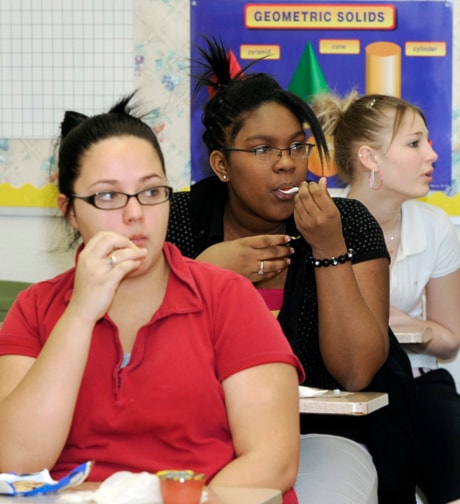What makes us get fat?
We all know, deep down, that obesity comes when we consume more calories than we burn on a regular basis.
But this simplistic formula misses some of the dietary and metabolic nuances.
Some of us overeat and never seem to gain a pound; others count every calorie and still battle the bulge. Some folks are done in by a sweet tooth, some favour carbs and some subsist on the salad bar.
So, scientists are constantly on the lookout for explanations of why our omnivorous species eats so differently from person to person.
Here’s a buffet sampling of some recent findings on why we eat as we do:
• Blame what Mom ate. Researchers at Rockefeller University in New York City reported on a rat study last fall that found when a mother eats a high-fat diet during pregnancy, it produces brain changes in her offspring that stimulate the appetite — and lead to overeating and obesity early in life.
• Tonsils keep us thin. Dutch researchers reported last month that children who have their tonsils surgically removed, with or without their adenoids, are at increased risk for becoming overweight or obese by the time they’re 8.
The doctors suspect that kids with frequent tonsil infections have somewhat stunted growth and that once the tonsils are removed, they experience “catch-up” growth that can get out of control.
• Ear infections make us fat. Scientists at the University of Florida found that middle-aged adults with a history of middle ear infections tend to be overweight more than similar adults with no history of infections.
They suspect that damage to a nerve that passes through the middle ear — the chorda tympani — intensifies the desire for fatty, high-energy foods.
• Obesity numbs the tongue. Penn State researchers reported last fall that obesity in lab rats gradually numbs their sensitivity to sweet foods and prompts them to consume larger and ever-sweeter meals to get the same feeling of reward.
As in obese humans, the researchers say extra weight decreases the amount of dopamine in the brain, a key signal in the brain’s pleasure system.
• Gut hormones make food look better.
Canadian researchers last fall reported brain imaging studies on humans that showed reward centers in their brains responded more strongly to pictures of food when the subjects have received an infusion of the appetite hormone ghrelin.
Other studies had shown that it activated eating through the brain’s command center. But the new research found the hormone affects many brain regions related to reward, motivation, even visual processing and memory of what foods were displayed.
• Junk food makes kids happy. Taiwanese and U.S. scientists reported earlier this month on a study of more than 2,300 kids in Taiwan between 2 and 12 years of age.
While those who ate more burgers, pizza and fries and soft drives were more likely to be overweight, they were less likely to feel unhappy, sad or depressed.
So, scientists argue, programs aimed at reducing childhood obesity have to find not only alternative foods, but also alternative ways to promote positive feelings in the kids.
• Fast food may not be worse than sit-down-restaurant food. Purdue University scientists analyzed data from an Agriculture Department survey and found that any meal eaten out is likely to be bigger and have more calories than a home-cooked meal, but that fast food meals tend to be smaller, and thus have fewer calories, than the average meal from a table-service restaurant.
Trouble is, people eating sit-down tend to cut back on food consumption the rest of the day, while those dining from the counter or drive-through do not. Total intake may be the same either way.
• See the good, pick the bad. Researchers from the City University of New York and several other institutions presented several studies that show when people are given choices that include a healthy option, like a salad, they’re actually more likely to go for a less healthy alternative, like fries.
The selection patterns were actually more pronounced in people who have relatively high levels of self-control.
“Just because we consumers want to see healthier items available does not mean that we are going to choose them,” the authors wrote.
So blame it on your mom, or your ghrelin.
Lee Bowman is a health and science writer for the Scripps Howard News Service.
